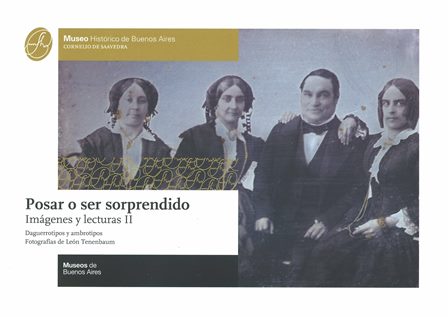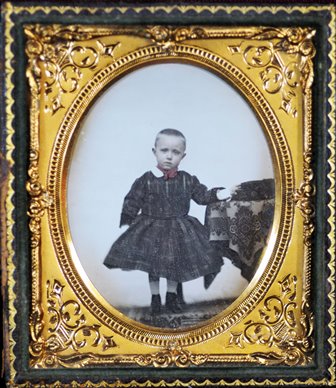 The Historical Museum of Buenos Aires Cornelio Saavedra, under the General Directorate of Museums, Secretariat of Cultural Heritage, announces the publication of the book Posar o ser sorprendido. Daguerrotipos y ambrotipos. Fotografías de León Tenenbaum. (Posing or being caught. Daguerreotypes and ambrotypes Photos of Leon Tenenbaum).
The Historical Museum of Buenos Aires Cornelio Saavedra, under the General Directorate of Museums, Secretariat of Cultural Heritage, announces the publication of the book Posar o ser sorprendido. Daguerrotipos y ambrotipos. Fotografías de León Tenenbaum. (Posing or being caught. Daguerreotypes and ambrotypes Photos of Leon Tenenbaum).
The book provides information, in the first place, about the collection of twenty eight daguerreotypes and ambrotypes of Saavedra Museum and a selection of forty photographs of Leon Tenenbaum made ??between 1953 and 1971.
The book features articles by Abel Alexander (President of the Iberoamerican Society for the History of Photography) on the history of the daguerreotype and the museum's collection; also by Daniel Tubío (photographer and teacher) who reflects on the evolution of photography from its earliest beginnings to the present and by Gabriel Alberto Piñeiro, director of the Museum Saavedra, and can be purchased at the Museum, at the General Directorate of Museums and Shop at the Cultural Ministry of Culture of the City of Buenos Aires.
The second volume of the series entitled Imágenes y Lecturas (Images and Readings), the book provides information in the first place, about the collection of Twenty eight daguerreotypes and ambrotypes that, as Abel Alexander points out, is one of the most interesting public collections of Argentina. In it famous portraits of famous Thomas Columbus Helsby, Amadeo Gras, Felix Pitre and Ignacio Nir can be appreciated.
Daguerreotypes belonging to Manuel Mateo Male (1766-1859) the famous maker of combs that ladies from Buenos Aires wore during the decade of 1830, and his family particularly stand out.
Also the ones related to the family of Gervasio Antonio de Posadas, where Dr. John William Mackenna appears, who as British Hospital surgeon operates for the first time in the country through the use of anesthesia (first with ether and then with chloroform).
Second, the book is devoted to photographs of Leon Tenenbaum (1916-2006) who, from 1952-1995, photographed the city in his free time. Tenenbaum is a documentary photographer or maybe a memoirist, who donated his collection of 2077 photographs and 2683slides, to the Historical Museum of Buenos Aires "Cornelio Saavedra" in 2004.
They keep unique images: houses, buildings, shops, corners, trees and plants adorning the city streets. It is not common to see people in his photographs, but it is worth to mentioning for its rarity; anonymous characters are photographed almost at random, just to appear before the images hunter. Home and places are not the only things that have disappeared but also livelihoods of other times (suerteros, waffle), customs (bonfires of Saint Peter and Saint Paul), gestures and attitudes that can be seen in this selection of forty photographs.
The title Posar o ser sorprendido (Posing or being caught) tries to stop precisely in the obvious difference between the two collections. If for obtaining a daguerreotype or an ambrotype the portrayed must pose, that is placed in a certain position for the photographer during the long seconds required by the process, in Tenenbaum’s photographs surprise precedes, the apparent spontaneity in shots. If at first the portrayed was quite aware that his image permanence was wanted; the latter, however, are the result of the walks of Leon Tenenbaum in town recovering characters and neighbors transformed by the act of the photographer, in testimony of the past of Buenos Aires.












